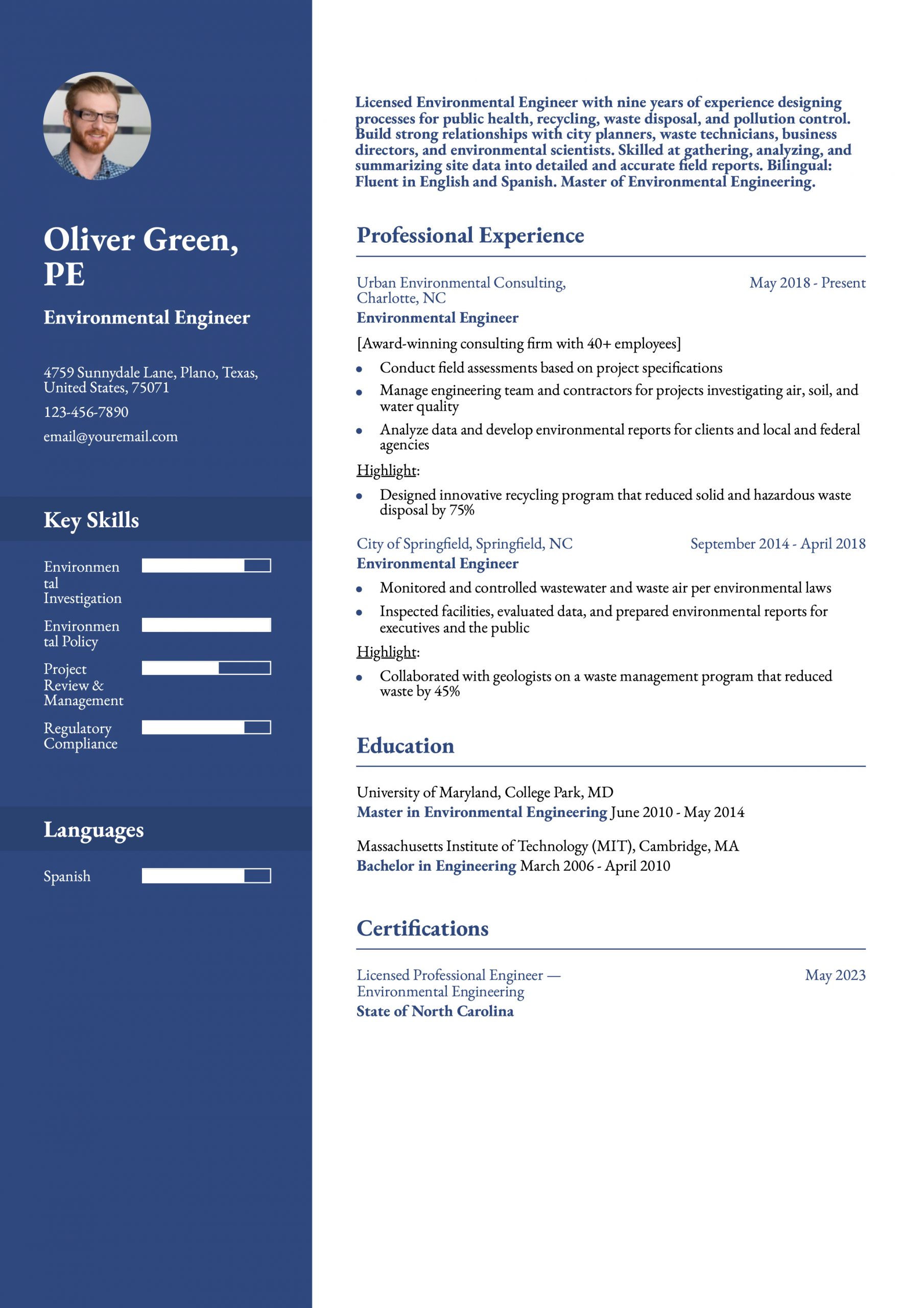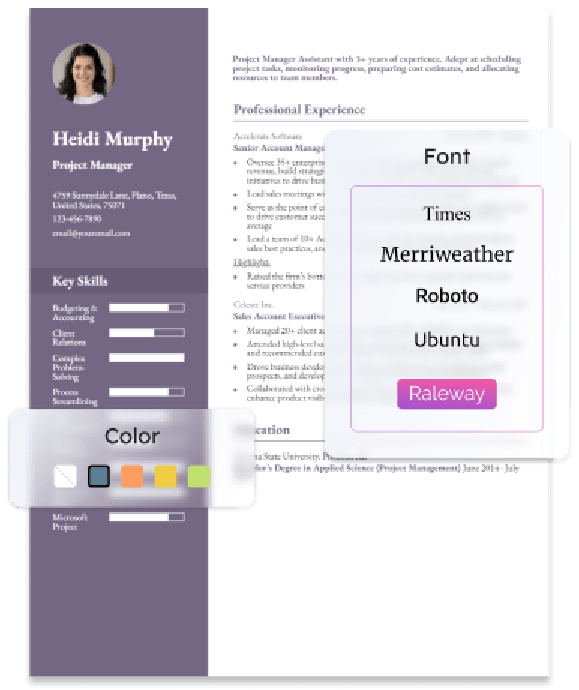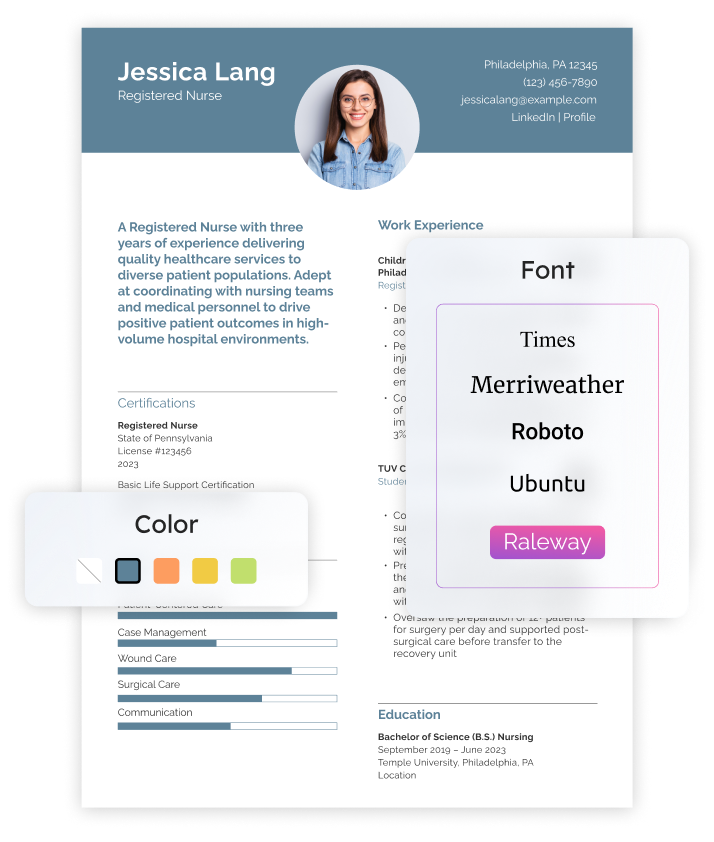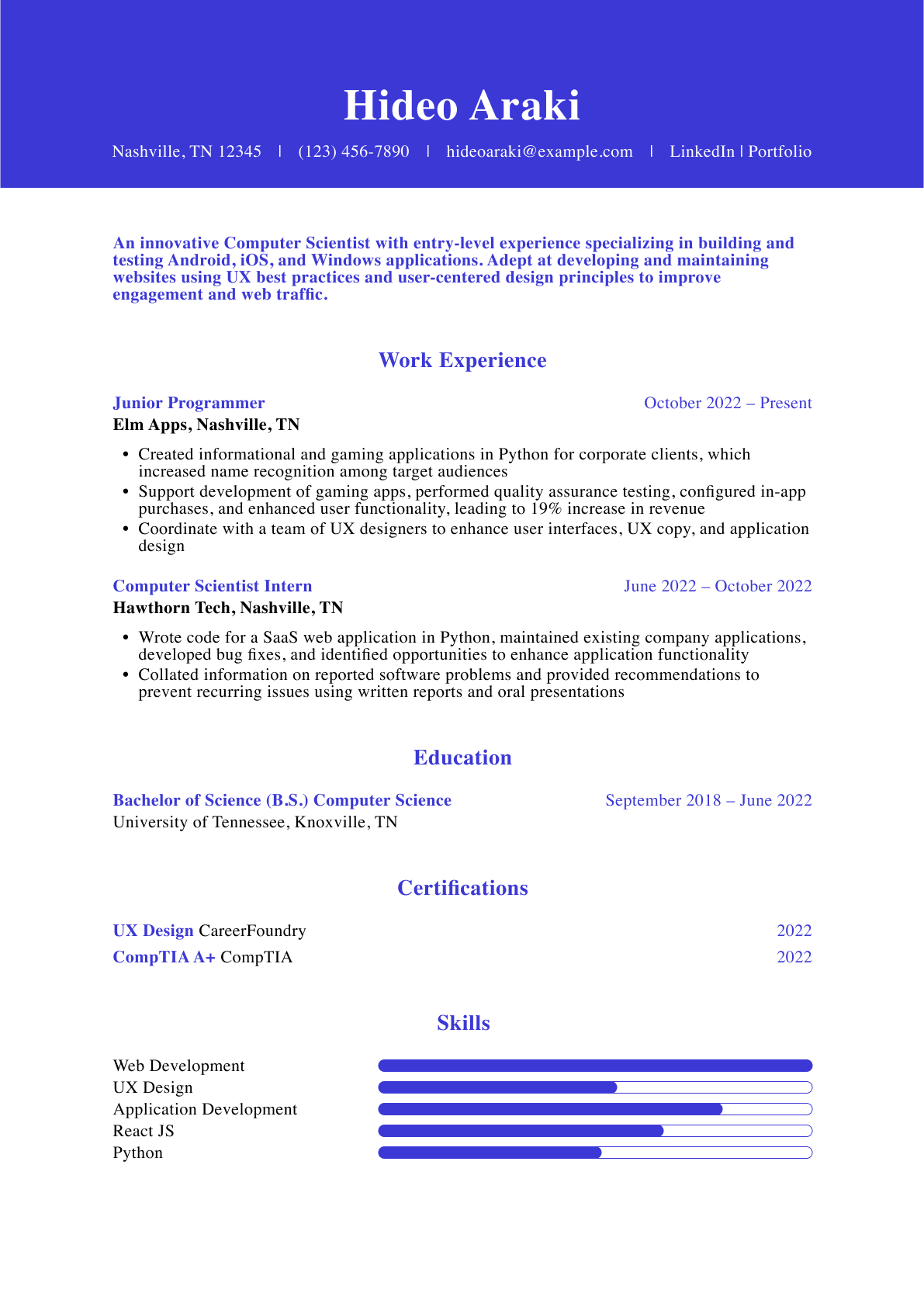To write a good resume for engineering jobs, you’ll need to show you can design complex systems based on deep technical knowledge. The tips and examples below can be helpful to improve your engineering resume. They provide guidance on what information to include in each section of your resume.
Most Popular Engineering Resumes
Engineering Resume Example
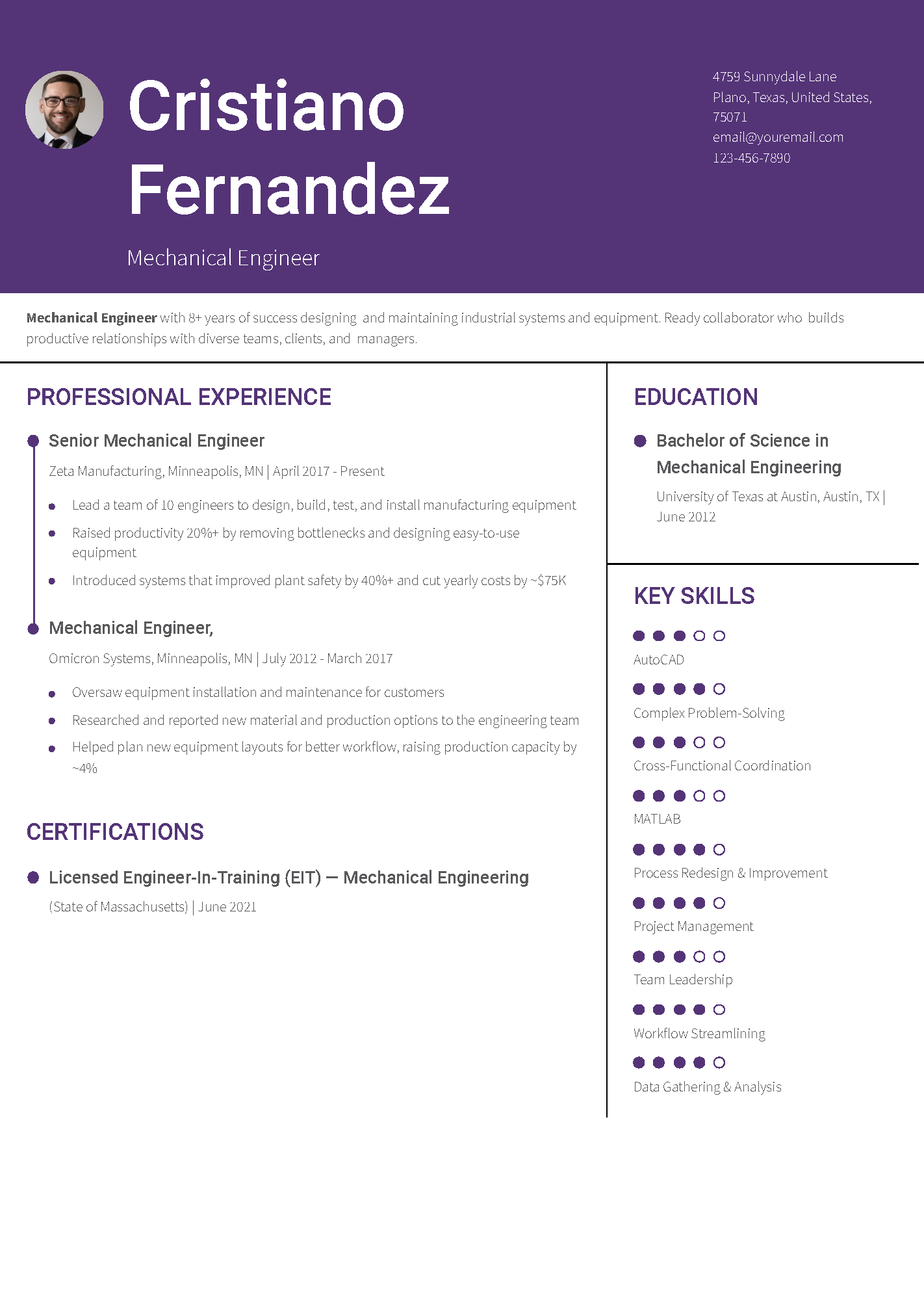
Why this Mechanical Engineering resume example is strong:
This resume clearly highlights both technical skills (like AutoCAD and CAD) and collaborative abilities, demonstrating the candidate’s ability to apply mechanical engineering expertise to real-world projects in team environments. It combines a strong educational background with relevant certifications, making the candidate well-prepared for advancing in the field.
Environmental Engineer Resume Example
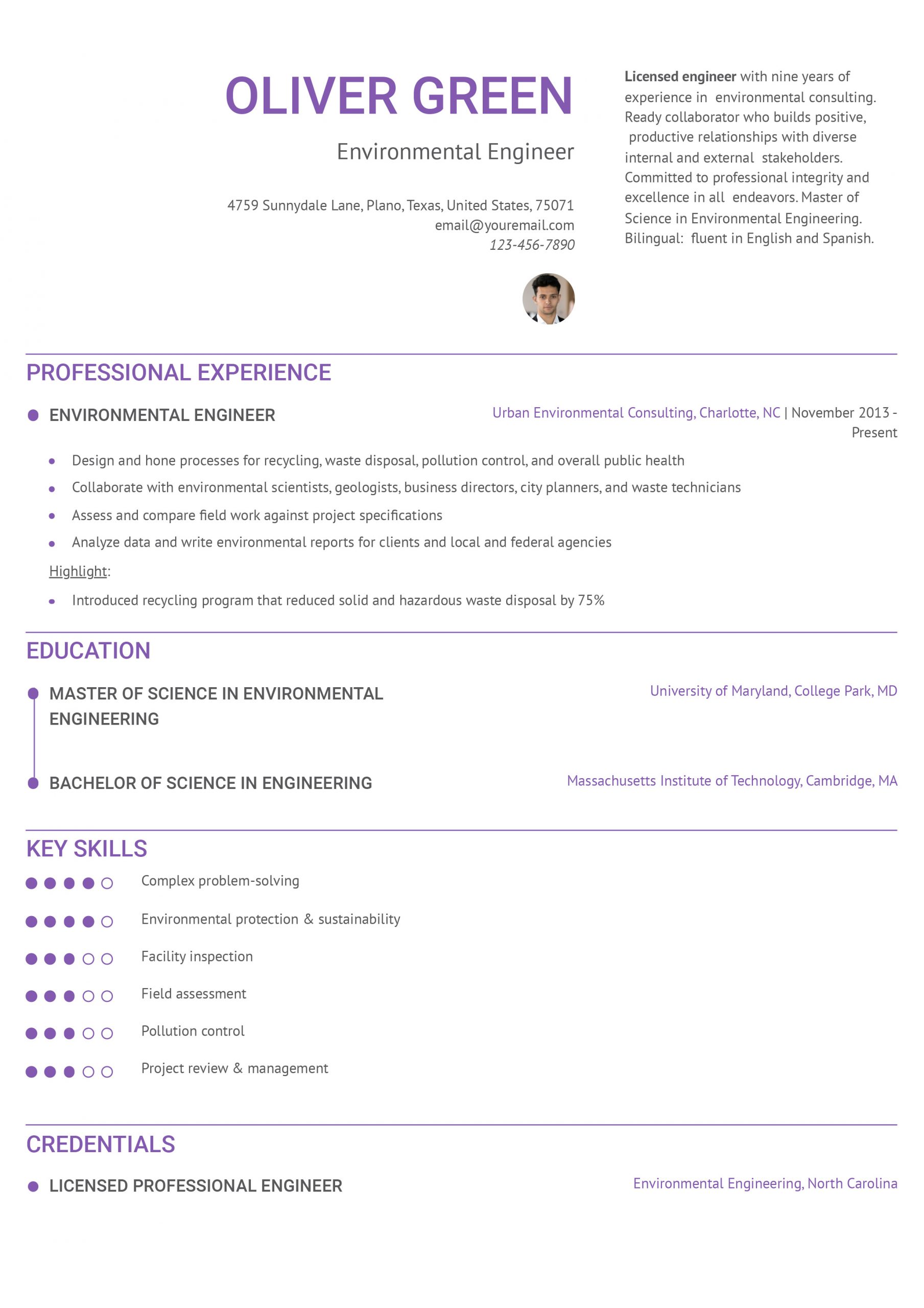
Why this Environmental Engineering resume example is strong:
The resume emphasizes the candidate’s extensive experience in environmental projects and regulatory compliance, a crucial component of environmental engineering. The inclusion of notable accomplishments, like waste reduction initiatives, showcases the candidate's impact on public health and environmental protection, which aligns well with the role's goals.
Civil Engineering Resume Example
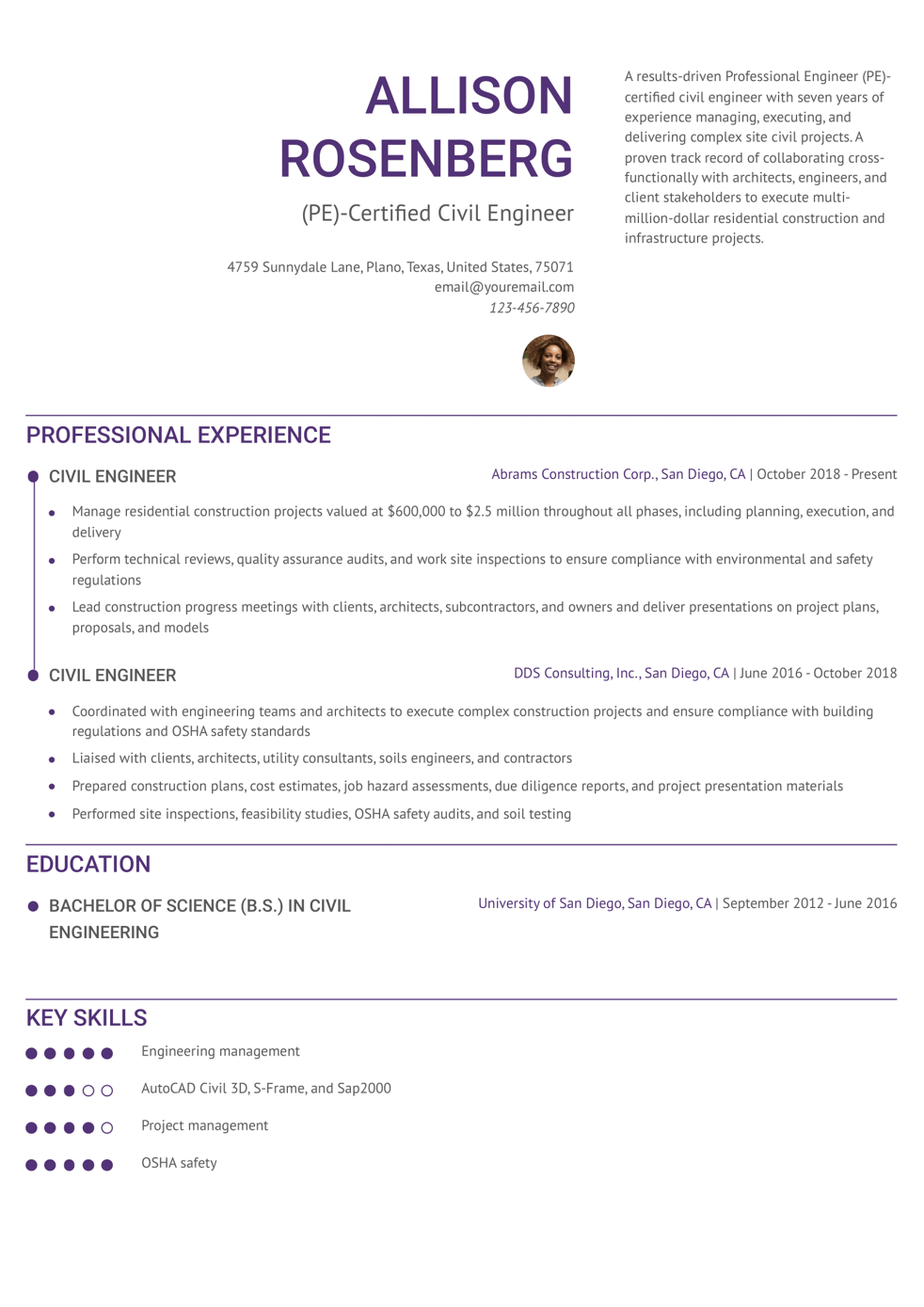
Why this Civil Engineering resume example is strong:
This example demonstrates the candidate’s extensive experience in civil infrastructure projects with quantifiable results, such as consistently completing projects under budget. It highlights key skills like project management, land development, and compliance with building codes, essential for ensuring safe and effective urban planning and development.
Project Engineer Resume Example
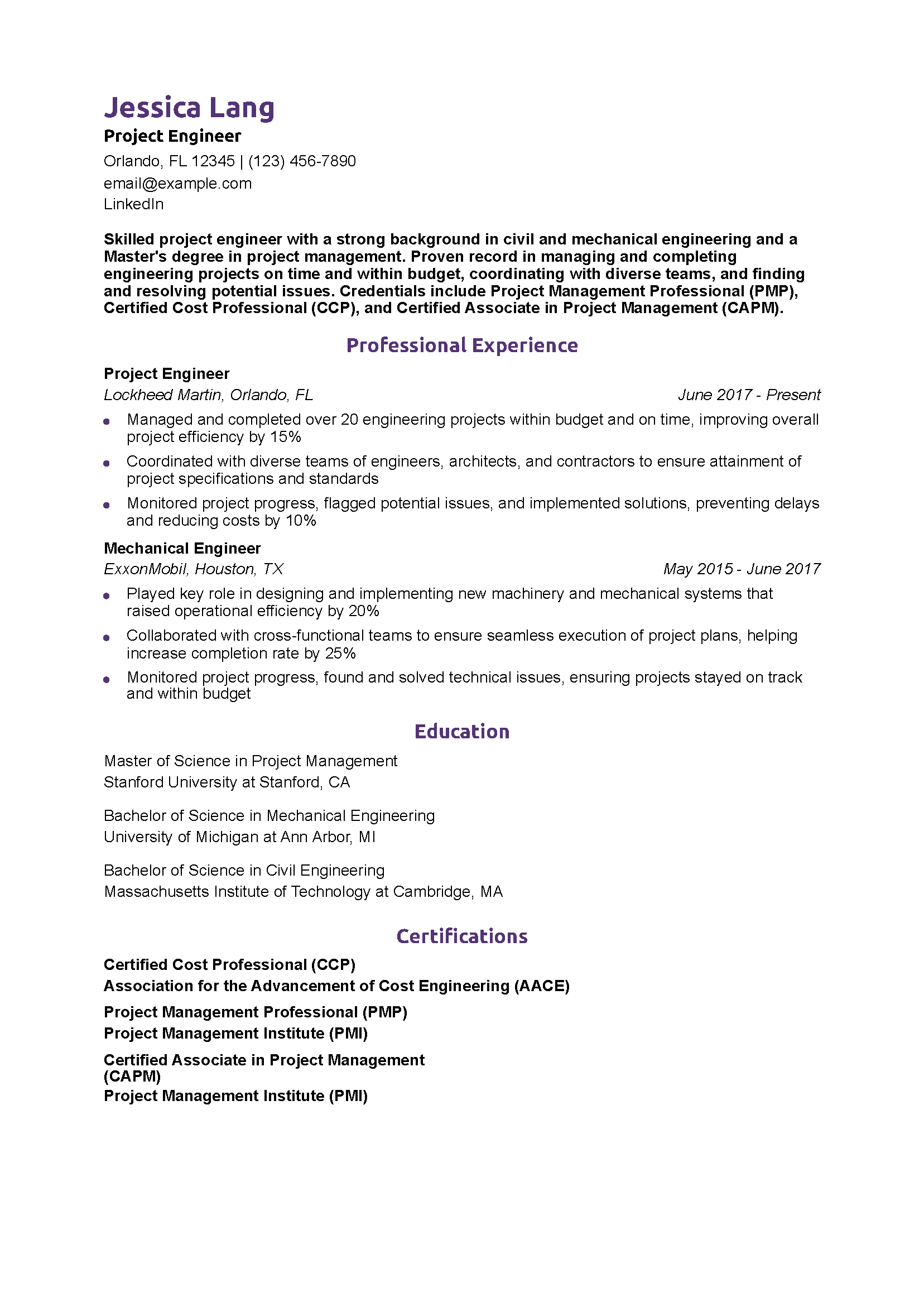
Why this Project Engineer resume example is strong:
This resume showcases the candidate’s strong background in project management and engineering, with certifications like PMP and CCP that validate their skills. The professional experience is detailed with specific improvements in efficiency and cost savings, demonstrating the candidate’s capacity to lead successful engineering projects across diverse teams.
Quality Assurance Engineer Resume Example
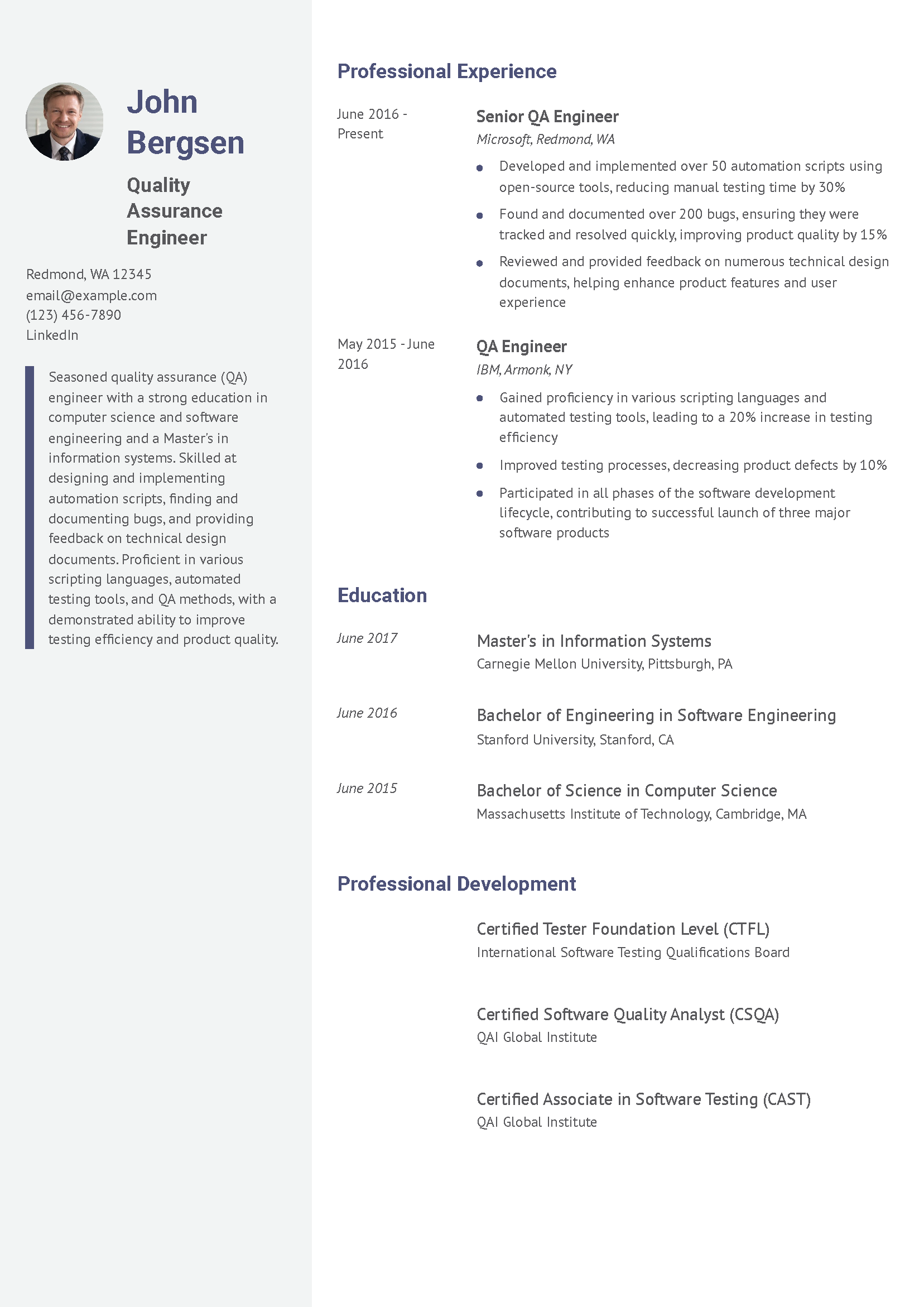
Why this Quality Assurance Engineer resume example is strong:
This example emphasizes the candidate’s expertise in automated testing and bug tracking, two core aspects of quality assurance. The resume also uses quantifiable achievements (such as reducing testing time by 30%) to demonstrate the candidate's value in improving product quality, which is a crucial outcome in QA roles.
Audio Engineer Resume Example
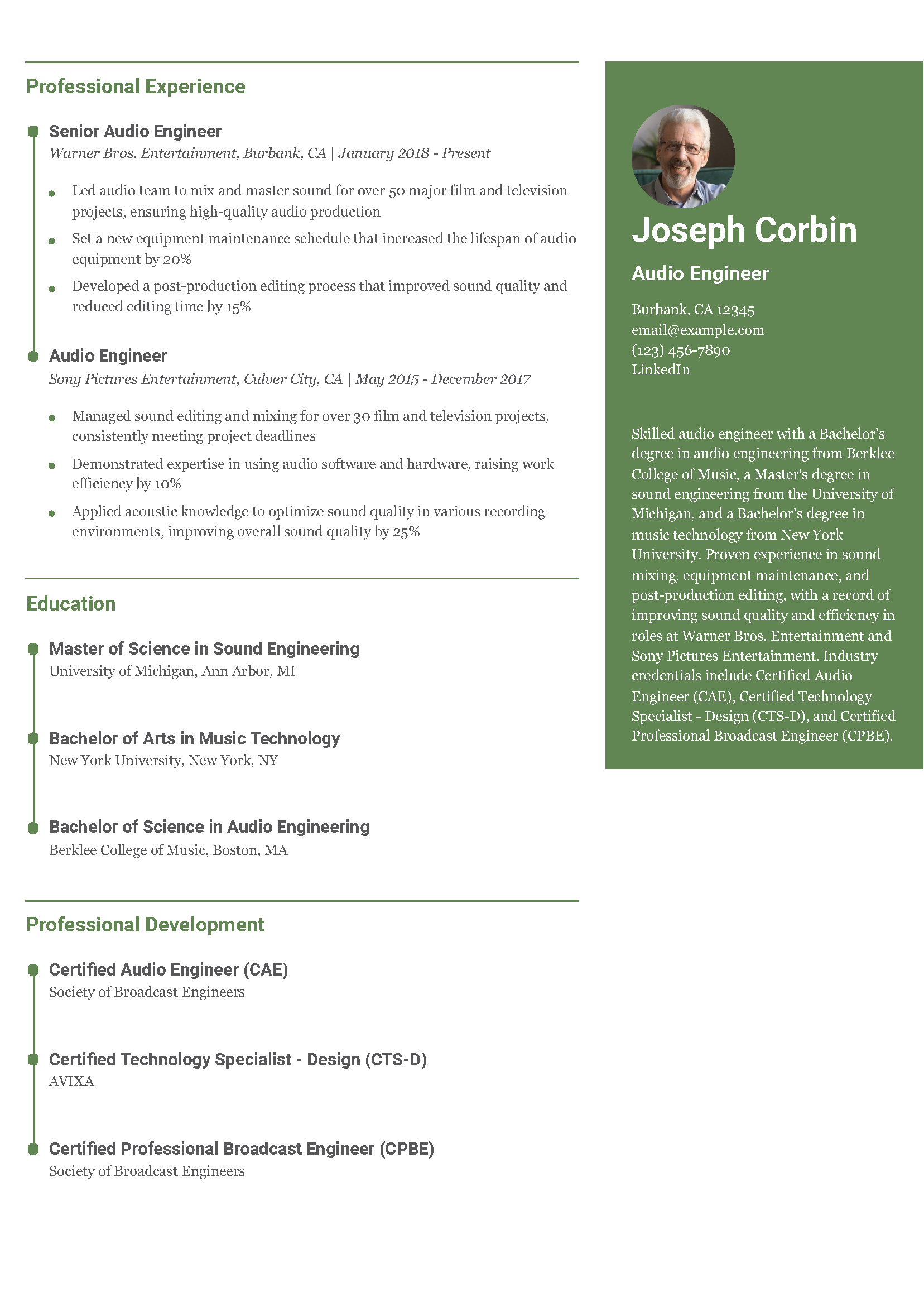
Why this Audio Engineer resume example is strong:
This resume highlights the candidate's experience in high-profile projects and their ability to enhance sound quality through expertise in sound mixing and equipment maintenance. Industry-recognized certifications (like CTS-D and CAE) validate the candidate’s specialized skill set, making it suitable for competitive audio engineering roles in film and media.
Industrial Engineer Resume Example
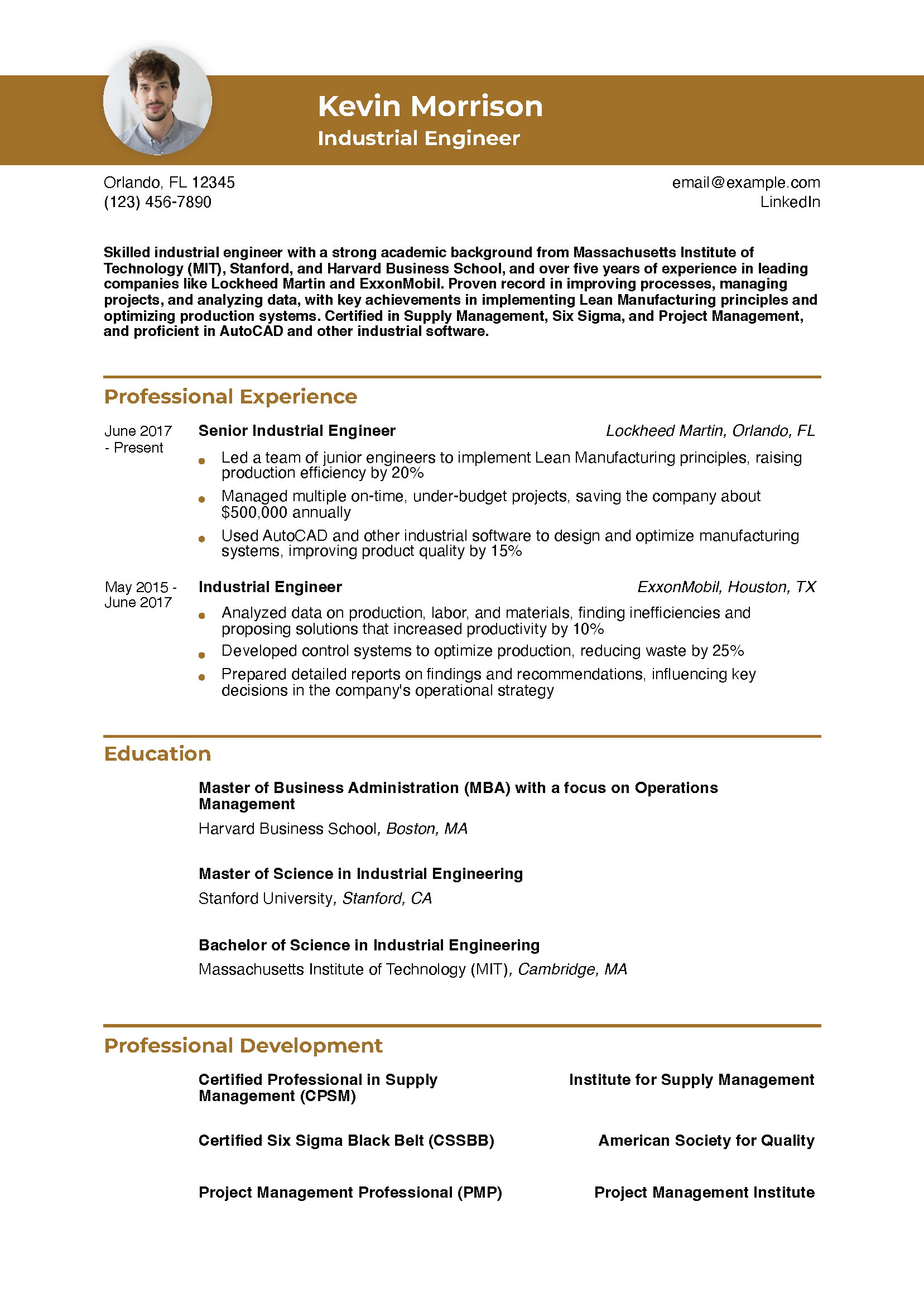
Why this Industrial Engineer resume example is strong:
The resume effectively combines the candidate's education from prestigious institutions with impactful professional achievements, such as implementing Lean Manufacturing principles that improved efficiency by 20%. Certifications in Six Sigma and Project Management also enhance the candidate’s qualifications for optimizing processes and managing large-scale production systems.
Our templates are crafted by professional resume writers to make creating your resume quick, easy, and effective.
- Professional resume template downloads
- Customized cover letter generation
- AI resume writing support
- Career-building resources and advice
Engineering Text-Only Resume Templates and Examples
How To Write an Engineering Resume
1. Craft an outstanding profile with a summary of your engineering qualifications
A strong profile section will catch the hiring manager’s interest by giving the top reasons you excel as an engineer. What is your approach to the process of technical design? How has that helped you create sophisticated machines or structures in your engineering discipline?
Consider how you apply math or science principles to find real-world solutions. For instance, maybe you’ve built a reputation for working with cities on more environmentally friendly infrastructure. Or perhaps you’re focused on developing robotics to help manufacturers raise efficiency. Whatever your key strengths as an engineer, feature them in your profile section, and you can persuade the recipient of your resume to read it more closely.
Mechanical Engineering Profile Example
Mechanical engineer focused on finding robotics solutions to environmental and human problems. Demonstrated success collaborating with diverse teams to complete projects ahead of tight deadlines. Naturally curious and committed to gaining and applying new expertise. Master of Science in Mechanical Engineering.
Environmental Engineering Profile Example
Licensed environmental engineer with nine years of experience designing processes for public health, recycling, waste disposal, and pollution control. Build strong relationships with city planners, waste technicians, business directors, and environmental scientists. Skilled at gathering, analyzing, and summarizing site data into detailed and accurate field reports. Bilingual: Fluent in English and Spanish. Master of Environmental Engineering.
2. Showcase your engineering experience
The experience section is where you can convince hiring managers you’re qualified by giving detailed examples of your success in engineering. For each relevant job in your work history, brainstorm the specific products, equipment, or processes you developed. How did these projects mark an innovation or technical advancement? What was their outcome, and how did they help solve practical challenges for your company or customers? By answering these questions, you can give hiring managers a sense of the impact you’d have as an engineer at their organization.
Experience Example
Environmental Engineer, Urban Environmental Consulting, Charlotte, NC | May 2018 to present
[Award-winning consulting firm with over 40 employees]
- Conduct field assessments based on project specifications
- Manage engineering team and contractors for projects investigating air, soil, and water quality
- Analyze data and develop environmental reports for clients and local and federal agencies
Highlight:
- Designed innovative recycling program that reduced solid and hazardous waste disposal by 75%
3. Outline your education and engineering-related certifications
With the education and certifications sections, you can assure hiring managers that your technical design work has a strong knowledge base. Give basic details on your college degree(s), along with any courses, dissertations, or academic projects relevant to your target engineering role. Also, specify whether you’re an Engineer in Training (EIT) or a Professional Engineer (PE).
The following are templates and examples to help you format your education and certification details on your resume. Note that optional template areas appear in [brackets].
Education
Template
- Degree Name — [Major], School Name, City, ST | [Year]
- [Thesis or Dissertation]
- [Relevant Coursework or Projects]
Example
- Bachelor of Engineering, Massachusetts Institute of Technology (MIT), Cambridge, MA | 2012
Certification
Template
- Certification Name or Title, [Awarding Organization] | [Year]
Example
- Licensed Professional Engineer — Environmental Engineering, State of North Carolina | 2021
4. List engineering-related skills and proficiencies
Include a “Key Skills” (or “Areas of Expertise”) section on your resume to show the various engineering tools and methods you use. With this section, you can also emphasize your branch of engineering and the general math or science concepts behind it. Below are some common terms to consider for your engineering skills section:
| Key Skills and Proficiencies | |
|---|---|
| 3D modeling | Civil engineering |
| Complex problem-solving | Computer-Aided Design (CAD) |
| Cross-functional coordination | Data gathering and analysis |
| Design calculations | Design development |
| Engineering Product Data Management (EPDM) software | Environmental engineering |
| Environmental science | Infrastructure development |
| Mathematics | Mechanical engineering |
| Mechatronics design | New system development |
| Physics | Process streamlining |
| Product improvement and maintenance | Production validation |
| Project and program management | Public speaking and presentations |
| Regulatory compliance | Task prioritization |
| Team collaboration | Technical writing and reporting |
| Time management | |
5. Keep your job descriptions jargon-free
One of the most common mistakes on engineer resumes is using jargon or long technical words when a short one would do. A classic example is people using the words “utilize” or “utilization” instead of “use.”
Jargon is tempting for engineers because the field is complex and technical. Whatever your branch of engineering, it probably has plenty of specialized terms with no simpler option (e.g., “mechatronics”). These terms are acceptable for your resume if they speak to your goals. The problem is when you trade short, simple words for long and clunky terms or phrases. By doing this, you make it harder for the hiring manager to read or understand your resume. Here are six more common examples of jargon:
change –> adjustment, modification
goal –> objective
launch –> establishment, implementation
law –> regulation
skill –> capability
task, duty –> responsibility
Don’t worry about jargon when you first draft each job description but keep it in mind later when you’re reviewing and editing what you’ve written. For any long word you’ve used, pause and ask: Is there a shorter synonym? This habit will help you make your resume a clear, concise record of what you offer employers.
Example:
Bad
- Utilized advanced project coordination capabilities to establish viable objectives and schedules
Good
- Used strong project management skills to set viable goals and schedules
How To Pick the Best Engineering Resume Template
As with most vocations, engineers should use a simple and straightforward resume template. Opt for a visual template that lets the hiring manager quickly review your best career details. Select a clear resume font, and avoid any template with an overly colorful or elaborate design.
Frequently Asked Questions: Engineering Resume Examples and Advice
Why should I use an Engineering resume example as a template for my own resume?-
An Engineering resume example provides a solid foundation for structuring your own resume. It showcases how to highlight achievements, use quantifiable metrics, and present your experience in an organized manner. You can personalize it by adding your unique qualifications and adjusting sections to better reflect your skills and career history.
What are common action verbs for engineering resumes?-
For engineers, the best resume verbs will have to do with designing complex devices or systems – for example, “configured,” “innovated,” or “invented.” But there are various others you might use to describe your duties and contributions in this field. The following list can help you find the right mix of action verbs for your resume:
| Action Verbs | |
|---|---|
| Analyzed | Built |
| Calculated | Collaborated |
| Communicated | Configured |
| Constructed | Created |
| Designed | Developed |
| Devised | Diagnosed |
| Enhanced | Established |
| Executed | Explored |
| Generated | Implemented |
| Improved | Innovated |
| Introduced | Invented |
| Launched | Managed |
| Organized | Planned |
| Presented | Produced |
| Reported | Resolved |
| Solved | Streamlined |
| Strengthened | Structured |
| Supervised | Tested |
How do you align your resume with a job posting?-
The Bureau of Labor Statistics forecasts that jobs in architecture and engineering will increase by about 4% between 2021 and 2031. This growth rate is roughly the same as the average for all U.S. jobs.
You can get more engineering job interviews if you tailor your resume for each application. One great way to do this is by adding brief descriptions of your past employers in brackets next to or below the employer’s name.
Employer descriptions let you show any similarities between your past organizations and the one that posted the job. For example, maybe you’ve worked at organizations of a similar size or in the same industry or sector. Or perhaps you’ve worked for organizations with a similar mission or leadership philosophy. By working these details into your descriptions, you can make your resume more relevant to the job opening.
What is the best engineering resume format?-
In nearly all cases, use a Combination (or Hybrid) resume because it’s easiest for hiring managers to learn about your pertinent skills and experience. It’s also simplest for you to modify based on your job goals.
With the Combination format, you highlight your most relevant skills and experience in your Experience or Work History section and an intro section. (This combination of work history and intro content is where the format gets its name.) Your resume intro should include a Profile summary and Key Skills section, but you may also include an Awards or Career Highlights section.
Should my engineering resume be one or two pages?-
Your engineering resume should ideally be one page, especially if you have fewer than 10 years of experience. A two-page resume can be effective for seasoned professionals with a longer track record if it highlights accomplishments and skills directly relevant to the job. Every detail should add value and strengthen your candidacy.
Limit your work experience to the past 10 to 15 years, unless earlier positions are highly relevant. Keeping your resume concise and targeted will make a strong and memorable impression on potential employers.

To increase your chances of an interview for engineering jobs, write and submit a strong cover letter. The key to an effective letter is customizing it based on each job opening. Read our engineering cover letter guide to learn how. For other related examples, see our civil engineering and mechanical engineering cover letter guides.
Craft your perfect resume in minutes
Get 2x more interviews with Resume Builder. Access Pro Plan features for a limited time!
